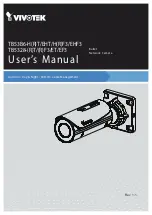
1-8
Preliminary November 4, 1998
MAX 4000 Series Hardware Installation Guide
Getting Acquainted with the MAX
Interfaces
Interfaces on expansion cards
AIM/BONDING
The DCE interfaces in Figure 1-4 on page 1-3 and Figure 1-6 on page 1-4 provide
AIM/BONDING inverse-multiplexing services to devices connected to them. (For details
about cables that connect to these ports, see “Serial host interface specifications” on
page C-21.)
PALMTOP
The palmtop port connects to a hand-held palmtop control terminal, although it can also
connect to a VT100 terminal. The palmtop port provides access to the menu-driven user
interface of the MAX. It runs at 9600 bps (configurable through the user interface), 8 bits per
character, no parity, no flow control, 1 stop bit. (For details about cables that connect to these
ports, see “Cables and Connectors” on page C-1.)
ISDN BRI
ISDN BRI ports (Figure 1-5 on page 1-4) are a group of either eight DTE or eight DCE ports
providing point-to-point ISDN BRI connections between the MAX and other devices. Int he
MAX manuals, these ports are called the Net/BRI and Host/BRI ports for the DTE and DCE
interfaces, respectively. From the point of view of the MAX, pins 3 and 6 transmit on the
Net/BRI interface and receive on the Host/BRI interface. Pins 4 and 5 receive on the Net/BRI
interface and transmit on the Host/BRI interface. (For details about cables that connect to these
ports, see “ISDN BRI interface specifications” on page C-20.)
IDSL
The IDSL ports (Figure 1-10 on page 1-6) are a group of eight DCE ports providing
point-to-point IDSL connections between the MAX and other devices. An IDSL port has the
same pinouts as a Host/BRI port. (For further information, see “IDSL specifications” on
page C-43.)
















































